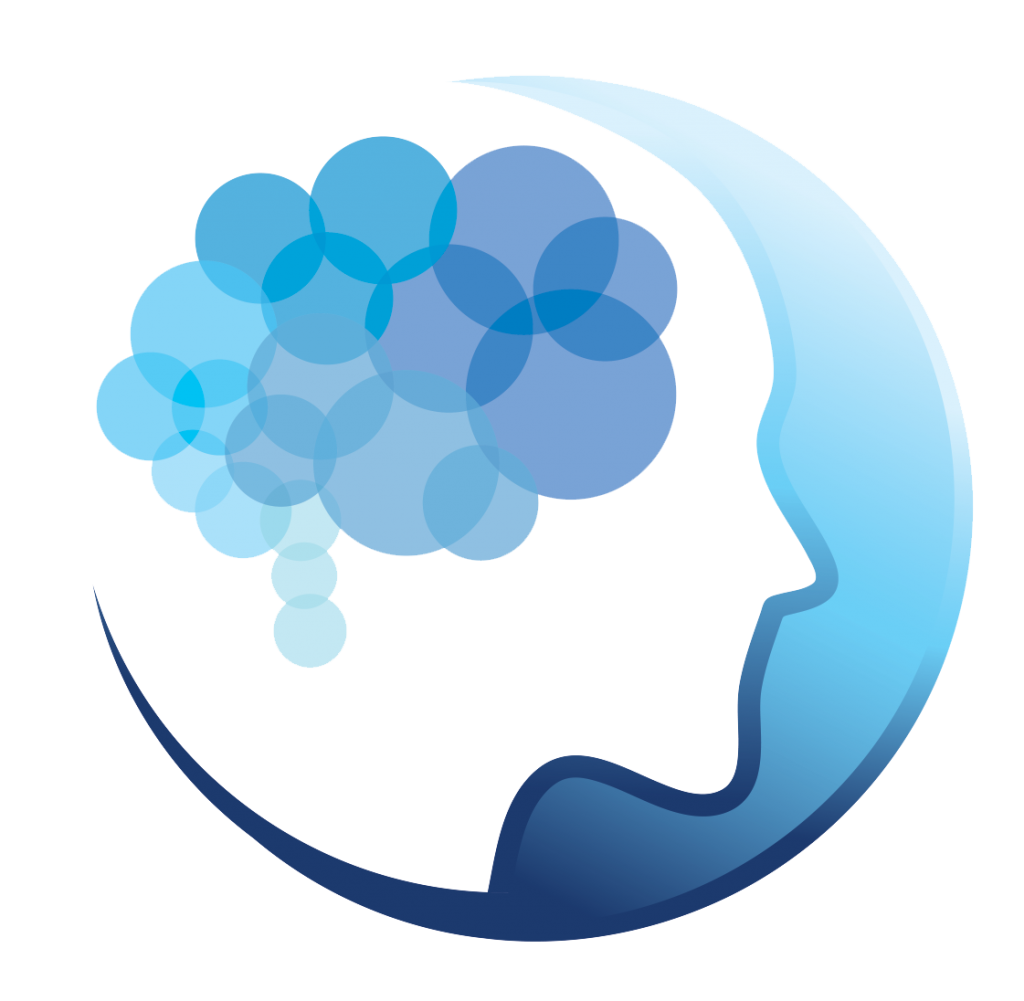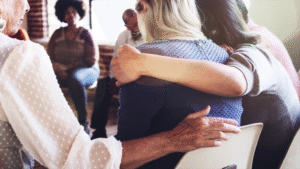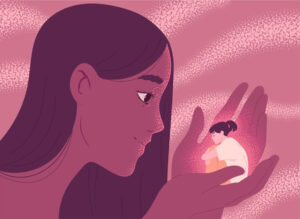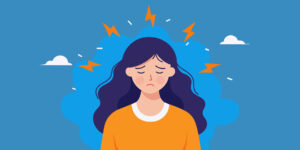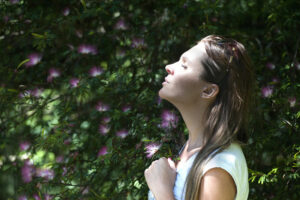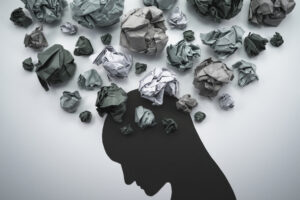Related Resources
For Seasonal Affective Disorder
In this psychoeducational video, Dr. Kate Truitt begins by explaining that stress and the holidays tend to go hand and hand. 25% of people feel loneliness around the holidays. If we’re feeling lonely, left out, disconnected, work pressures, or daily life pressures, that can make our stress go up exponentially and enhance the loneliness. Dr. Kate explains that Amy the Amygdala loves to chime in on this. She wants to feel connected to others, and if she’s feeling left out, it can lead to other feelings. By utilizing the Havening Tools throughout the holidays, we can create an opportunity to curate the type of season we want.
A Havening Touch and Mindfulness Guided Healing Exercise
In this self-havening meditation, Dr. Kate Truitt guides us through a healing exercise for practicing grounding ourself into the present moment and becoming comfortable with havening touch. She asks us to begin by welcoming in palm havening, moving hug (arm havening), and/or face havening. These different touches make up the havening touch, and she explains that we should use whichever we are most comfortable with. How does this movement make us feel? She guides us to notice what specific movements or feelings are the most comfortable and calming for us. If this touch had a color, what would it be? How does it alter our mind and our body? By taking the time to notice and identify what this havening experience is like, we can deepen our relationship with this experience and utilize it to help ground ourself in the present moment.
The Neuroscience of Seasonal Affective Disorder
There’s more to SAD than changing seasons. SAD is a real form of depression that can seriously impact a sufferer.
— Laura L. Smith and Charles H. Elliott
By Dr. Kate Truitt
Now that the days are getting shorter and the air is getting colder, do you notice a sense of heaviness settling over you despite the festive season? Is there a shift in your moods? Are you feeling down or maybe a little depressed? Or worse, do you feel like you’ve been hit by a bus and can’t seem to get back on your feet?
These feelings may be a sign of what we call Seasonal Affective Disorder (SAD). SAD is a type of depression that is directly linked to changes in the seasons. While it can affect some individuals in the spring and summer, it’s most commonly associated with the fall and winter months when the days become shorter and there’s less sunlight.
Differentiating Seasonal Affective Disorder (SAD) From Winter Blues and Clinical Depression
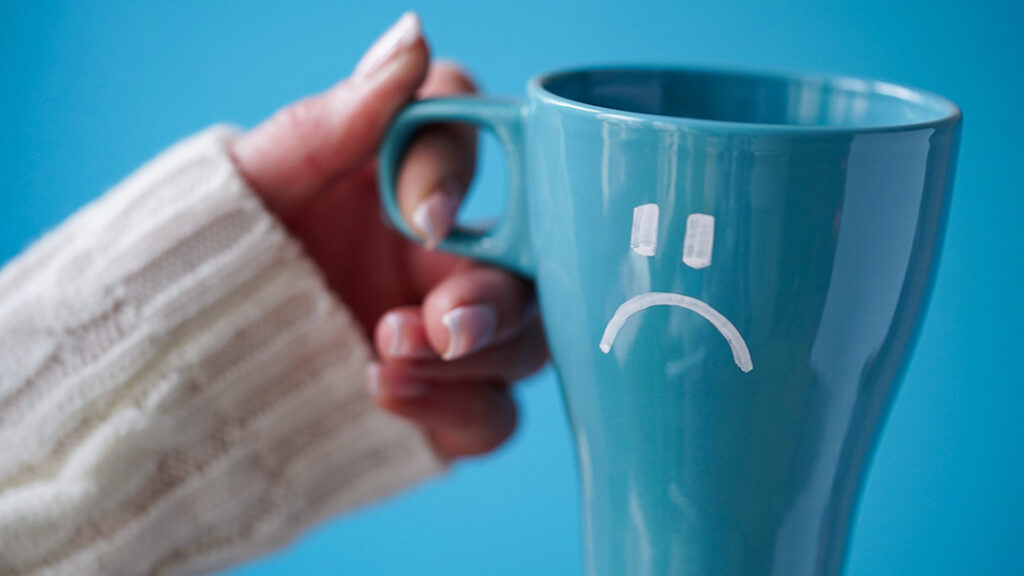
Seasonal Affective Disorder (SAD), winter blues, and clinical depression have distinct differences. SAD is a type of depression that follows a seasonal pattern, with symptoms typically emerging during the fall or winter months and improving as spring arrives. These symptoms include persistent feelings of loneliness, sadness, loss of interest in activities, low energy, changes in appetite, difficulty sleeping, and difficulty concentrating. Importantly, these symptoms are more severe and longer-lasting than what is typically experienced with general winter blues.
In this psychoeducational video, I talk about how stress and the holidays go hand in hand, causing loneliness.
Winter blues or holiday blues, also known as subthreshold SAD or sub-syndromal SAD, refers to milder symptoms of low mood, fatigue, and decreased energy that are experienced during the winter months but do not meet the full criteria for a diagnosis of SAD or clinical depression. While winter blues may still impact daily functioning to some extent, the symptoms are generally less severe and do not cause significant impairment in the same way that SAD or clinical depression can. I’ve previously written about the challenges of holiday blues and you can read it here.
Clinical depression, also known as major depressive disorder, can occur at any time of the year and is not limited to a specific season. It involves persistent and significant feelings of sadness, worthlessness, loss of interest, changes in appetite and sleep patterns, difficulty concentrating, and thoughts of death or suicide. These symptoms can be debilitating and interfere with various aspects of a person’s life, including work, relationships, and self-care.
In this table, I’ve summarized the key differences between the three:
SAD | Winter Blues | Clinical Depression | |
Seasonality | Symptoms occur primarily during the fall and winter months. | Symptoms may occur throughout the year. | Symptoms can occur at any time of the year. |
Duration | Symptoms typically last for several months. | Symptoms typically last for a few weeks. | Symptoms can last for months or even years. |
Severity | Symptoms are more severe and disruptive to daily life. | Symptoms are less severe and do not interfere with daily life. | Symptoms are severe and significantly disrupt daily life. |
Common Symptoms | May include sadness, fatigue, decreased motivation, changes in sleep and appetite, difficulty concentrating, and social withdrawal. | May include some of the same symptoms as SAD, but to a lesser degree. | May include a wider range of symptoms, such as persistent sadness, hopelessness, loss of interest in activities, feelings of worthlessness or guilt, and suicidal thoughts. |
Exploring the Neuroscience Behind Seasonal Affective Disorder (SAD)
The regulation of our internal clocks, known as our circadian rhythm, helps us maintain a healthy sleep-wake cycle and perform daily functions. However, during the dark winter months, reduced exposure to natural sunlight can disrupt this internal balance.
Because of the shorter days and longer nights, our bodies will start producing more melatonin and less serotonin. An increase in melatonin levels can lead to daytime drowsiness and fatigue, even if you get enough sleep at night.
On the other hand, serotonin plays a crucial role in regulating mood, sleep, appetite, and overall well-being. Reduced sunlight exposure leading to decreased serotonin production, contributes to the symptoms of SAD, such as low mood, fatigue and decreased energy levels, lack of motivation, and difficulty concentrating. Lower serotonin levels can also affect our amygdala, prefrontal cortex, and hippocampus functioning, leading to increased sensitivity to negative stimuli, difficulty regulating emotions, and impaired cognitive function.
Treatment and Management Options for Seasonal Affective Disorder
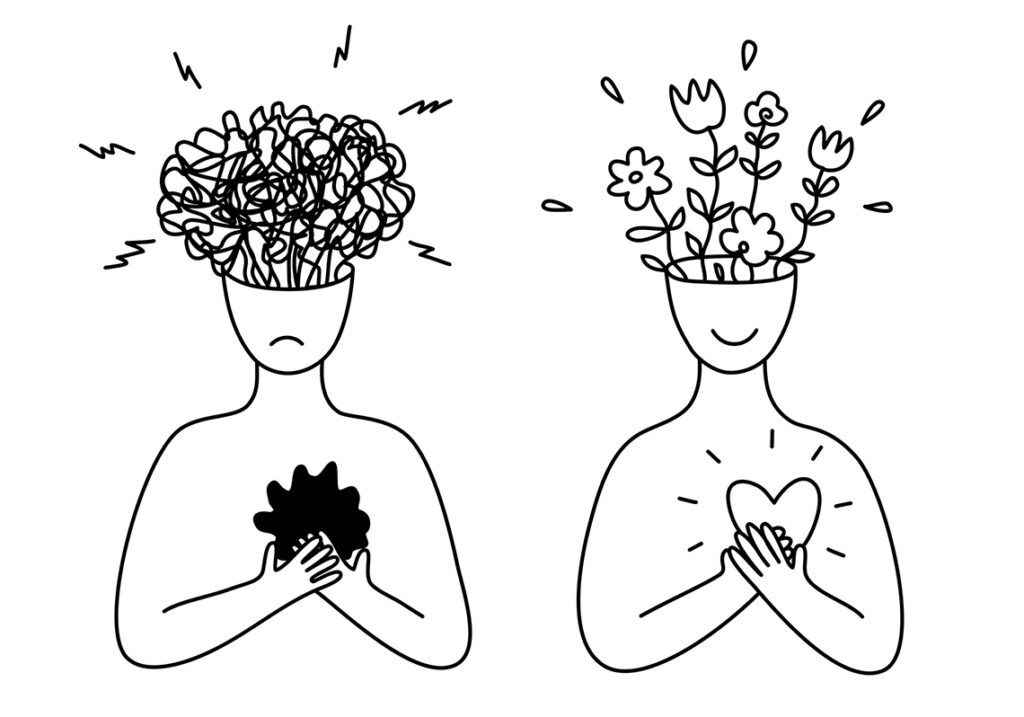
The following combinations can be included in the treatment and management of SAD:
- Light Therapy
Light therapy involves exposure to bright light that mimics natural sunlight. It can help regulate circadian rhythms and alleviate SAD symptoms. Light therapy boxes or lamps emit a specific intensity and wavelength of light to provide therapeutic benefits. This treatment option is considered safe and effective
- Cognitive-Behavioral Therapy
Our thoughts have a powerful impact on our emotions and behaviors, and that’s where cognitive-behavioral therapy (CBT) comes in. CBT is a form of therapy that helps us identify and challenge negative thought patterns. By working with a trained therapist, we can restructure our thinking and adopt more positive and adaptive thoughts. This can break the cycle of negativity and empower us to approach the winter season with a renewed sense of optimism.
- Mindfulness and Meditation
As we navigate the challenges of SAD, incorporating mindfulness and meditation practices into our routine can be a game-changer. Mindfulness involves intentionally directing our attention to the present moment with curiosity and without judgment. By practicing mindfulness, we can cultivate resilience and reduce stress. Meditation goes hand in hand with mindfulness, helping us achieve a state of calm and focus. Whether it’s a few minutes of deep breathing or a guided meditation session, these practices can rewire our brain’s response to stress and create inner peace amidst the winter blues.
One way to incorporate mindfulness is through the self-havening touch. It can help you create a safe space within yourself to reduce distress and create a sense of calm. If this is your first time hearing about the havening touch, I invite you to watch this YouTube video and try it for yourself. Let me know how it goes!
- Lifestyle Modifications: Exercise, Diet and Sleep
Engaging in regular physical activity, adopting a balanced diet, and getting sufficient sleep can work wonders for SAD. Exercise, in particular, triggers the release of endorphins and promotes the production of brain-derived neurotrophic factor (BDNF), which supports the growth and survival of neurons. Plus, focusing on a nutrient-rich diet and making sleep a priority can further improve our resilience and well-being during the winter months.
Harnessing Neuroplasticity for SAD Treatment
Our remarkable brain possesses a superpower called neuroplasticity, and understanding this concept is also important when it comes to managing and treating Seasonal Affective Disorder (SAD). Neuroplasticity refers to the brain’s ability to adapt and reorganize itself in response to experiences, thoughts, and emotions. Through targeted interventions, we can harness the power of neuroplasticity to positively reshape our brain and build resilience against SAD.
For example, when we expose ourselves to bright light during light therapy sessions, we stimulate the release of neurotransmitters like serotonin, which play a crucial role in regulating mood. This flood of serotonin can help rebalance brain chemistry and boost our mood.
CBT and mindfulness-based interventions, on the other hand, target negative thought patterns and foster more adaptive cognitive and emotional responses. By rewiring the brain’s neural pathways, these therapies promote psychological resilience and equip individuals with coping mechanisms to deal with SAD symptoms.
Conclusion
Seasonal Affective Disorder is a real thing. If you or someone you know is going through this, remember that you are not alone. Reach out for support, embrace self-compassion and reconnect with yourself and others, you might want to get in touch with us today.
To help you learn more about this topic, here are all the resources I mentioned throughout this blog post:
Additional Mental Health Resources:
Healing in Your Hands with Self-Havening Live Virtual Workshop
If you want to learn more about self-havening and equip yourself with the tools to regulate emotions and minimize stress not only during the holidays but throughout the year, I invite you to join us in the first Healing in Your Hands Book Workshop hosted by the Truitt Institute.
Register during the holidays and get 30% OFF using the code HEALING.
If you’re looking for additional mental health resources:
- Connect with me on TikTok where I share daily videos on mental health, therapy, and psychology.
- Subscribe to our YouTube channel for tons of psychoeducational and guided exercises that can help you in your healing journey.
- Join our bi-weekly newsletter and unlock exclusive content, upcoming events and expert tips to thrive.
- Grab a copy of my book Healing in Your Hands. Within its pages are real life examples and practical tips and insights you can use to heal the past, create the present and build the future you want.
We also offer the following services among others for those currently residing in California:
References
- Mayo Clinic. (2023, October 27). Seasonal affective disorder (SAD) – Symptoms & causes. Mayo Clinic. https://www.mayoclinic.org/diseases-conditions/seasonal-affective-disorder/symptoms-causes/syc-20364651
- National Institute of Mental Health. (2023, October 26). Seasonal Affective Disorder (SAD): More Than the Winter Blues. https://www.nimh.nih.gov/health/publications/seasonal-affective-disorder-sad-more-than-the-winter-blues
- NHS inform. (2023, November 14). Seasonal affective disorder (SAD). https://www.nhsinform.scot/illnesses-and-conditions/mental-health/seasonal-affective-disorder-sad/: https://www.nhsinform.scot/illnesses-and-conditions/mental-health/seasonal-affective-disorder-sad/
